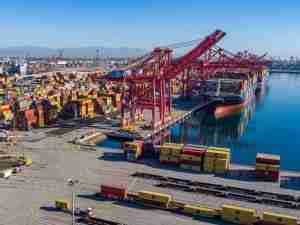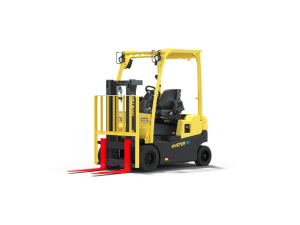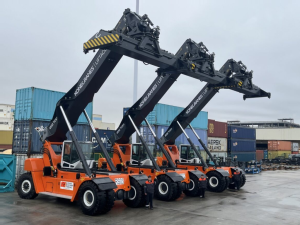Aggressive measures to improve fuel economy and introduce environmentally sustainable terminal operating practices over the past year have resulted in the APM Terminals’ Global Terminal Network lowering CO2 emissions per TEU handled to 17.6 kg, representing a reduction of 8% from the 2008 figure of 19.1 kg/TEU, and nearly equaling the designated base year of 2007 emissions of 17.5 kg/TEU.
APM Terminals has announced the goal of reducing CO2 emissions per TEU by another 10% in 2010. It is a company-wide initiative in which full participation in the generation and sharing of ideas and “Best Practices” is expected. “Currently we have 80-100 environmental projects ongoing, but we need to further accelerate the best practice sharing process to maximize energy reductions” stated Kristensen, who delivered one of the keynote presentations to the fifth annual edition of the event.
APM Terminals initiated a program of recording and analyzing environmental performance in 2007 as the first step in the process to introduce sustainable business practices. Each terminal is assessed for fuel efficiency and other factors in environmental impact, with the results carefully evaluated and distributed. “Every terminal gets an environmental report card” said Kristensen, adding “this enables a local improvement approach”.
Among the steps that APM Terminals has adopted as their environmental strategy is the implementation of a global certifiable Environmental Management System (EMS), active participation in sustainable port technology to further reduce the environmental impact, reducing consumption of diesel fuel through the use of electric-powered terminal equipment- carbon neutral where practical- and the engagement of local communities to increase sustainability.










